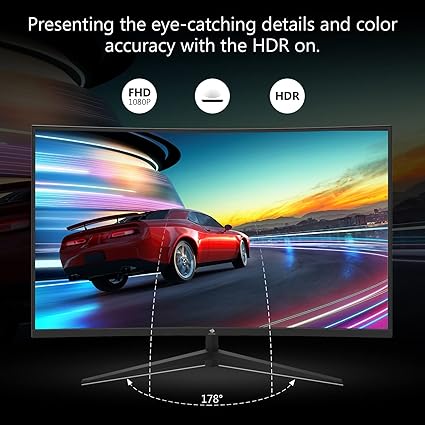Your gaming monitor is one of the most important pieces of hardware in your setup. It’s not just a screen—it’s your window into the game, displaying every detail and ensuring you have the visuals to keep up with fast-paced action. Whether you’re playing the latest AAA title or diving into competitive multiplayer, the right monitor can enhance your performance and enjoyment.
Key Features to Look For
When selecting a gaming monitor, there are a few key features to consider:
- Resolution: The resolution of a monitor determines how sharp the image will be. For most gamers, a 1080p display is more than sufficient, offering a crisp, clear picture without overwhelming your hardware. However, if you’re looking for more detail and have the equipment to support it, 1440p or even 4K monitors provide stunning visual fidelity.
- Refresh Rate: This refers to how many times per second the monitor refreshes the image on the screen. A higher refresh rate (such as 120Hz or 144Hz) results in smoother gameplay, making it easier to track fast movements and stay competitive. For fast-paced games like first-person or racing simulators, this feature is essential.
- Response Time: Response time measures how quickly a pixel can change from one color to another. Lower response times (measured in milliseconds) reduce motion blur and ghosting, which can be distracting during fast-moving sequences. A 1ms response time is ideal for competitive gaming.
- Panel Type: Different types of panels (such as IPS, TN, and VA) have their strengths and weaknesses. TN panels are known for fast response times and high refresh rates, while IPS panels offer better color accuracy and viewing angles. VA panels strike a balance between the two.
Monitor Size and Aspect Ratio
The size of your monitor is another factor to consider. A larger screen can offer a more engaging experience, especially for single-player games or open-world adventures. However, if you’re playing competitively, you might prefer a slightly smaller monitor that keeps all the action within your peripheral vision, reducing the need for head movement.
Aspect ratio also plays a role. While the standard 16:9 ratio is common for most gaming setups, ultrawide monitors (21:9) provide a wider field of view, which can be advantageous in certain games, particularly those that emphasize exploration or strategy.
Conclusion
Choosing the right gaming monitor is about finding the right balance between performance and visual quality. Whether you’re aiming for the highest refresh rate or the best color accuracy, the right monitor can provide a significant boost to your gaming experience. Take your time to research and select a monitor that meets your specific gaming needs—you’ll be amazed at how much it can enhance your gameplay.

